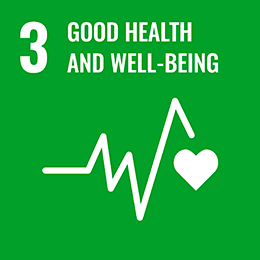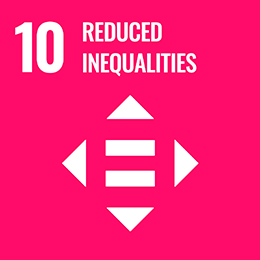Addicted

Share this article
The American Nightmare
“The success of a civilization is measured not just in its aesthetic achievements but also, and surely more importantly, in the duration and quality of life of its citizens” ― Niall Ferguson, Civilization: The West and the Rest
There is irony in Bruce Springsteen’s lyrics for American Dream “There's treasure for the taking, for any hard-working man”, especially if you consider the rising rates of mortality and obesity among America’s blue-collar workers, for which he is story-teller-in-chief.
This is the cohort that helped to build modern America. It is in the throes of a ‘deaths of despair’ epidemic. Has the veil of the ‘American Dream’ dropped?
While America is not technically classified as an empire à la Egypt, Greece or Rome, its global sphere of influence—which started in 1898 when the The Treaty of Paris gave it a few colonies—has grown to give it its current international super power status. Until then, African slave labour, abolished in 1865, had powered the inward-facing continent.
In his book Civilisation: the West and the Rest, author Niall Ferguson highlighted the six ‘killer apps’ that made the Western world great, namely: competition, science, a property-owning democracy, modern medicine, a consumer society and a work ethic that included saving and accumulating capital. In the supporting Channel 4 documentary Civilization: Is the West History?, he asks ‘is the West about to be overtaken?’.
One indirect cause of the West’s supremacy is that China turned inward and Trump’s ascendency could be seen as a consequence of America doing the same. There are certainly those that think, under President Donald Trump, America’s days as the leading super power could soon to be over.
From an economic output point of view, the US ceded its crown to China in 2014. From a hard currency perspective, US dollar supremacy is no longer guaranteed¹ either. But America’s middle classes seem to be crumbling, along with her infrastructure. At a time when the rest of the world is seeing falling mortality rates, America’s white low-income earners are seeing an increase.
Of the 10 leading causes of death in America, which make up 74.1% of all the deaths, suicide is one of the few that has seen the death rate increase. In 2016, 45,000 lives were lost to suicide, with rates going up more than 30% in half the states in the US since 1999.
But ‘deaths of despair’ is about more than just suicide. It is about the epidemic of addiction as it includes drug—largely opioid—overdoses and cirrhosis and other chronic liver diseases. And it is specifically targeting white blue-collar workers aged between 45 and 64 (more often than not without a college degree), say Anne Case and Sir Angus Deaton, who coined the term, in their latest paper, Mortality and morbidity in the 21st century.
Taking a look at this phenomenon through the lens of Ferguson’s ‘killer apps’ it is easier to understand why this poorer segment of America’s workforce is turning to food, alcohol and painkillers to anesthetise its despair.
Taking competition first. In the pre-1970s heyday of the white blue-collar worker not only did discrimination give them better access to opportunities but their support systems, identities and friendships, all related to mental health, were tied to the workplace: the coal mine or car factory. Today, globalisation and an increasingly automated technology-driven world has seen the jobs disappear. With it, a loss of community, work, purpose, identity and hope.
The gap between the ‘haves’ and the ‘have-nots’ is widening with the wealthiest 10% of US households accounting for almost half of all consumer spending, according to the American Affluence Research Center. The inequalities of America’s two-tier structure are stark. The subprime meltdown and ensuing financial crisis simply accelerated their existing despair. There is a strong relationship between foreclosure and suicide.
From a healthcare perspective, the cost of being poor in the US is already high, and increasing. Despite spending 17.1% of GDP on healthcare (the highest amount compared to 13 other high-income nations), without a publicly financed universal health system, the US is failing its poorer labour force.
While 10% of wealthy America shops, another part is stuck in an inflammatory downward spiral of ‘cheap’ processed fast food and alcohol, fuelling obesity and related diseases that are also increasing in the US, as well as drug addiction. The latter is growing, because instead of treating the root cause of inflammation, the pain of many of the potentially related diseases was being alleviated by over-prescribed highly-addictive opioids.
The use of opium and even heroin for chronic pain relief dates back to 3400 BC. While modern day synthetic derivatives known as opioids such as oxycodone and hydrocodone started being used cautiously by doctors as far back as 1916.
But the entrance of pharmaceutical companies, specifically Purdue Pharma that developed a long-acting version of oxycodone called OxyContin in 1996, saw the start of drug dependent America. Eventually, in 2007, the FDA fined Purdue Pharma $634 million for criminal consumer fraud for knowingly lying about the addictive potential of OxyContin, but the damage was already done.
Millions are now addicted to opioids. Drug overdoses killed 63,632 Americans in 2016, a death rate that has increased by 21.5%, with 66% of all drug overdose deaths involving a prescription opioid or the illicitly manufactured opioids such as fentanyl. The largest increase in opioid overdose death rates is in males aged between 25-44.
Whichever way this is looked at, America’s opiate addiction is a failure of a triumvirate of pharma regulators, healthcare and insurance systems. So bad in fact, that Donald Trump intervened and declared the country’s opioid crisis as national public health emergency². But at the same time Medicaid, government-funded healthcare programme for low-income Americans was expanded under Barack Obama’s Affordable Care Act, and one on which many addicts rely for treatment is under threat³.
In her book, Happiness for All: Unequal Hopes and Lives in Pursuit of the American Dream, written before Trump came to power, Carol Graham, a senior fellow at the Brookings Institution and a professor at the University of Maryland, painted the picture of stress and increasing mortality among the white working class that lead to: “increasing support for populist and nativist politicians with unrealistic promises”.
Graham, daughter of George Graham who co-authored The High Cost of Being Poor in 1974 based on the poor in Peru, assessed how the experience of inequality has shaped the views Americans hold about the future and the value of hard work. And it is bleak. Echoing the work of Case and Deaton, white blue-collar American’s are less optimistic than poor Hispanics or blacks as their see themselves less well-off than their parents.
Deluded by the ‘American Dream’ and stuck in a cycle of obesity, alcoholism and drug addiction, there is very little of Ferguson’s ‘Protestant work ethic’ left. So what is the way forward? It’s clear that America doesn’t buy Europe’s concept of universal healthcare. But maybe they accept a notion of a two-tiered human life experience.
There are, however, glimpses of a fairer future. In 23&Me, the consumer has direct access to their core health data (with all of the privacy concerns for which Silicon Valley is now infamous and others potentially not yet considered). And in patent nerd, Jamie Love, they may soon all have the necessary pharmaceuticals available at an affordable price.
From an investment perspective, at $3.4 trillion, the global wellness market is three times larger than the global pharmaceutical industry. But there are also other alternatives. The poppy is a plant, but so too is cannabis. The sweeping legalisation of medical marijuana seems seem to have already brought down opioid use, as well as being just one of three plants known to bring pain relief.
Hemp, cannabis’ sister is a superfood that is easier and cheaper to grow than cotton or corn. With its myriad of other uses, such as footwear, clothing, paper and plastics, hemp is also the perfect social impact investment. The US is currently the largest consumer of hemp products but because of prohibition laws, it imports $100 million of products per year.
With the recent Hemp Farming Act of 2018, the aim is to legalise hemp as an agricultural commodity and bring production back to America. Perhaps, we can now expect a world of plant medicine delivered to us without the intervention of pharmaceutical companies and their lobbyist-corrupted regulators. Maybe cannabis stock companies are just the beginning of a new phase of disruption?
Omar Ayache
Photo: © Niki Natarajan 2018
Artist: Shok-1
¹ America beware: dollar supremacy is not forever (20.5.2018), Financial Times
² Trump declares opioids ‘public health emergency’ (26.10.2017), Financial Times
³ US healthcare battle puts opioid addicts on the frontline (14.7.2017) Financial Times
Article for information only. All content is created and published by CdR Capital SA. The views and opinions expressed in this article are those of the author(s). Information on this website is only directed at professional, institutional or qualified investors and is not suitable for retail investors. None of the material contained on this website is intended to constitute an offer to sell, or an invitation or solicitation of an offer to buy any product or service. Nothing in this website, or article, should be construed as investment, tax, legal or other advice.
Related articles
Mind the Gap
Our lives are currently being ruled by statistics. Yet in March, we were as likely to die of Covid-19 by biking for seven miles across a large city or by being hit by an asteroid over a lifetime. What is all this fear doing to our minds and the markets?

Plant Power
Cannabis stocks finally rallied after news of a Democratic win in the US elections. In a rapidly greening world, it is likely to be hemp, marijuana’s non-psychoactive cousin, which offers reasons to invest in this multipurpose weed.

Well-being
Funded by stressed-out city-living executives and the youth-seeking Silver Tsunami, the wellness economy is converging with the global health care industry. At a rate of 6.4%, the $4.2 trillion wellness industry is growing faster than the global economy.





